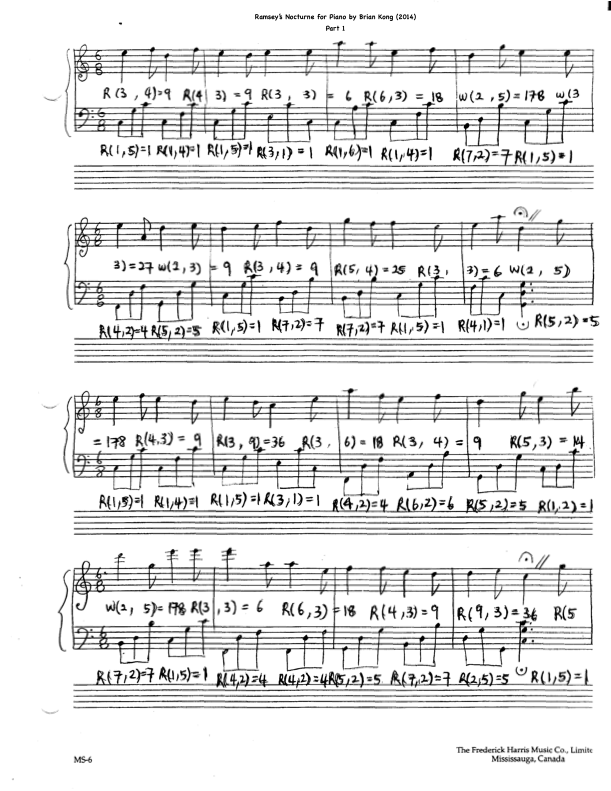Chapter 21 Ramsey's Nocturne
Project by: Brian Kong.
\(\textbf{Summary:}\) The project blends music component and Ramsey theory into one accomplishing harmony.
When creating a music piece, the basic qualifications that must be organized to achieve consonance are rhythm, melody, and harmony. While ruminating the basic qualification of creating a piece, the factors that will be modified during the creation of the piece shall be the notes, rhythm and, dynamics. These factors have been associated with certain rules from Ramsey theory related theme instructed by the composer.
The composition follow's these rubrics:
When composing notes, whether bass line or melody line, they will only be considered if they are known Ramsey number or Van der Waerden number.
-
Ramsey number or Van der Waerden number will be transformed into notes in the following manner: Arabic numeral from 1 to 7 will have one–to–one correspondence with each note in the sol–fa system: \(1=C, 2=D, 3=E, 4=F, 5=G, 6=A, 7=B\text{.}\)
Any number higher than 7 will be taken modulo 7: \(9\equiv 2 \pmod{7} =D, 29\equiv 1 \pmod{7}=C\text{.}\)
For example: \(R(3,3)=6 \mapsto\langle E, E, A\rangle\text{;}\) \(R(5,4)=25 \mapsto \langle G, F, F\rangle\text{;}\) \(W(3,4)=293 \mapsto \langle E, F, A\rangle\text{.}\)
Order will be maintained. However, the pitch may be varied.
-
Schur numbers represent the rhythm of the piece using similar manner as the previous rules: 1 = eighth note, 2= quarter note, 3 = half note, 4 = whole note.
For example: \(s(1)=2 \mapsto\) quarter note, \(s(2)=5 \mapsto\) eighth note, \(s(3)=14 \mapsto\) quarter note, and \(s(4)=45 \mapsto\) eighth note.


Listen to “Ramsey's Nocturne” performed and recorded by Brian Kong through the link below. The photo is by Veselin Jungic.
